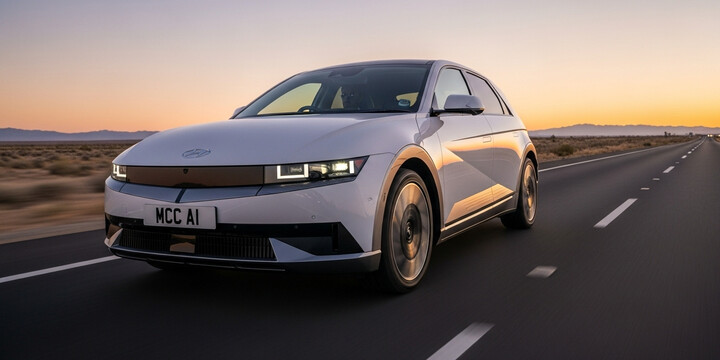
HYUNDAI IONIQ 5 (2024-) 5DR HATCHBACK 0.0 ELECTRIC 84KWH 228 N LINE S AUTO
The HYUNDAI IONIQ 5 (2024-) 5DR HATCHBACK 0.0 ELECTRIC 84KWH 228 N LINE S AUTO is an innovative fully electric vehicle that stands out in the UK's growing market for eco-friendly, stylish hatchbacks. Designed for those who want a blend of practicality, modern design, and sustainable driving, this model is especially well-suited for families, daily commuters, and tech-savvy drivers who prioritize a spacious interior and advanced features. Its sleek hatchback form makes it versatile for city driving and longer trips alike, while the impressive 84kWh battery offers ample range, making it a dependable choice for electric vehicle enthusiasts.
What makes the Hyundai Ioniq 5 particularly notable is its futuristic styling, innovative technology, and strong reputation for reliability. Known for its smooth driving experience and generous interior space, this model is often compared to other premium electric hatchbacks but remains competitively priced. With an average valuation of around £32,261 in the used market, it offers excellent value for those seeking an eco-friendly car with cutting-edge features. Whether you're a first-time EV buyer or upgrading from a traditional petrol vehicle, the Hyundai Ioniq 5 combines style, efficiency, and practicality, making it a compelling choice in the electric hatchback segment.

average use

Based on the most recent recorded mileage data for the Hyundai Ioniq 5 (2024-) 5DR Hatchback 0.0 Electric 84kWh 228 N Line S Auto, all observed vehicles have mileage readings within the 0 to 10,000 miles range. This indicates that the majority, if not all, of these vehicles are relatively new or have low mileage, suggesting they are likely recent models with minimal usage.

vehicle values

The data for private sale valuations of the Hyundai Ioniq 5 (2024-) 5DR Hatchback 0.0 Electric 84kWh 228 N Line S Auto shows that the majority of vehicles are being sold within the £33,000 to £34,000 (42.9%) and £31,000 to £32,000 (42.9%) price brackets. A smaller proportion, 14.3%, are advertised between £30,000 and £31,000. This suggests that most private sellers are listing the vehicle around the mid-£32,000s, indicating a relatively tight and concentrated pricing range for this model. Interestingly, there is no data for vehicles valued above £34,000 or below £30,000, which could point to market stability within this price corridor or limited sample size in those ranges.

production years

The data indicates that the majority of the Hyundai Ioniq 5 models, specifically 57.1%, are manufactured in 2024, with a smaller proportion, 42.9%, produced in 2025. This suggests that most vehicles of this model currently on the market are relatively recent, likely reflecting a recent production run or a high turnover of units. It also highlights that the 2024 model year is predominant among these vehicles.

colour popularity

The data for the Hyundai Ioniq 5 (2024 model) indicates that the most common paint colour among sampled vehicles is red, accounting for 42.9% of the fleet. Grey is the next most popular at 28.6%, while black and white vehicles each represent 14.3%. Notably, red is significantly more prevalent than other colours, suggesting a strong consumer preference for this vibrant hue in this model.

ownership cycle

The data indicates that a significant majority of the Hyundai Ioniq 5 (2024-) 5DR Hatchback 0.0 Electric 84kWh 228 N Line S Auto vehicles, approximately 71.4%, have had only one registered keeper. Conversely, around 28.6% of these vehicles have had more than one registered keeper. This suggests that most vehicles of this model tend to remain with a single owner, which could imply strong owner loyalty or recent introduction to the market, leading to fewer owners over time.

engine choices

Based on the data for the Hyundai Ioniq 5 (2024-) 5-door hatchback, all recorded vehicles are powered exclusively by electricity, with 100% of the sample using electric fuel type. Notably, there is no available data on engine capacity, which is expected given that the vehicle is fully electric and may not have a traditional engine capacity measurement. This highlights the EV-only nature of this model in the sampled data.












